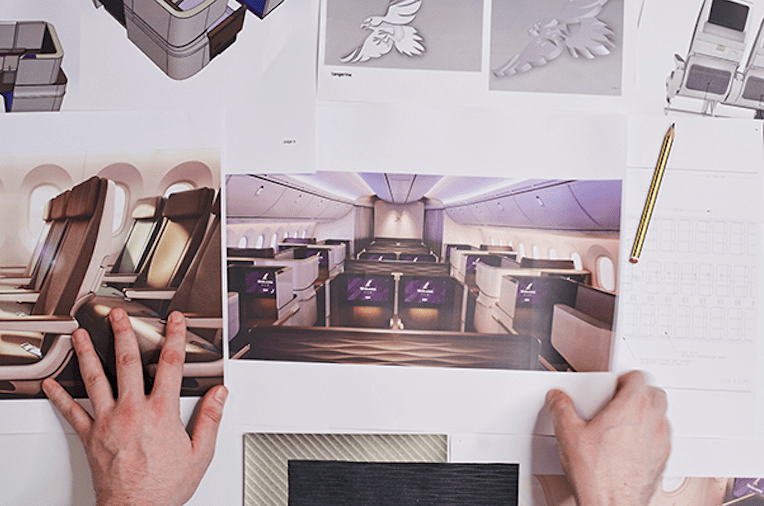Tangerine on the Process Behind the Gulf Air Rebrand
Share
APEX Insight: On Friday, Gulf Air’s first aircraft donning a redesigned livery and new cabin interior, a Boeing Dreamliner 787, will enter into service on the carrier’s double-daily London Heathrow route, before being completely rolled out across the airline’s fleet.
It may come as a surprise to some that Bahrain was among the first nations in the Middle East to establish a flag carrier, in 1950, and that by the 1970s, it had the most developed commercial aviation network in the region. At the time, Gulf Air was a trendsetter that “set the bar high for luxury and glamour in the skies,” said Matt Round, chief creative officer of tangerine, the design firm responsible for the airline’s new cabin interiors, which will be deployed across the airlines’s fleet, including Boeing 787, Airbus A320 and A321 aircraft.
In fact, it wasn’t until the early 2000s, when Bahrain’s neighbors established their own national carriers, that Gulf Air lost some of its prestige. But with the appointment of Kresimir Kucko, the former boss of Croatia Airlines, as Gulf Air’s new chief in November of last year came an ambitious expansion plan that includes the revival of the carrier’s long-haul network, the rollout of no fewer than 39 new aircraft by 2023, and the introduction of a renewed brand identity.
“They were looking to reposition the airline to be a significant player in the region and beyond,” Round told APEX Media. “The rebrand was an opportunity for Gulf Air to rediscover its pioneering magic and reinterpret its brand with a modern lift.”
Tangerine worked closely with Saffron Brand Consultants, which oversaw the development of the refreshed livery, logo and brand identity, to implement the airline’s “Smart With Heart” brand concept, expressed through the “intelligent use of space” and “capturing the essence of modern Bahrain,” Round said.
When it comes to maximizing the use of space, Round said, “The entrance way to the window seat in business class is dramatically improved by incorporating a flip-down foot rest, and the central console of the seat is stacked with the armrest to significantly improve the armrest space compared to competitor airlines using the same standard seating product [Rockwell Collins’ Serenity].”
But every effort to optimize comfort was paired with “heart,” which, Round said, encompasses Arabian hospitality, the modern sights and culture of Bahrain, as well as its historical traditions. Examples include references to the traditional sport of falconry – such as rich brown leather detailing evocative of the falconry glove and a feather-shaped pattern on materials across the cabin – as well as an iridescent graphic on the bulkhead, which “references the way sunlight glints off the surfaces of the cities that have emerged from the desert sands.”
As with every design, the final product was not the result of a eureka moment, but instead a collaborative process, according to Round – in this case, between Tangerine, Saffron, Rockwell and the airline. “Once all parties involved in the project were aligned behind a shared vision for Gulf Air’s service, it was then about loving the design into life, nurturing and gestating it throughout the program to ensure that the concept was executed to the highest standards to arrive at a truly sophisticated outcome.”



